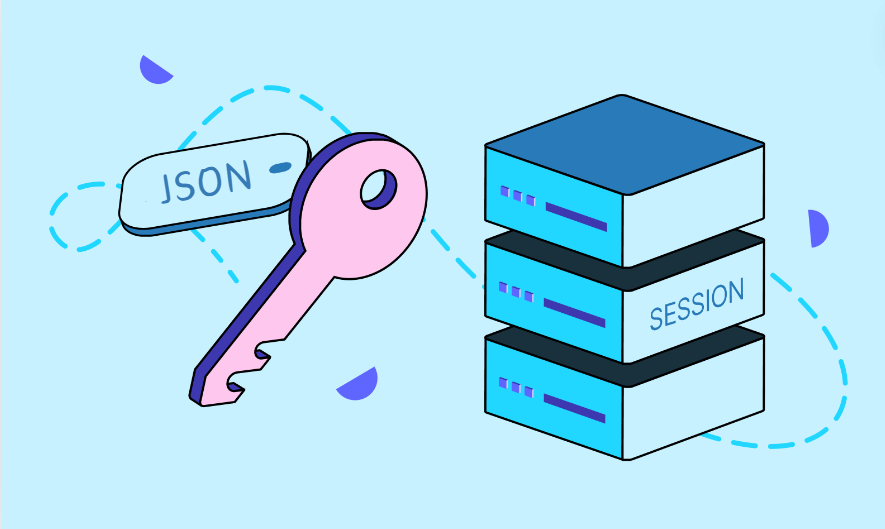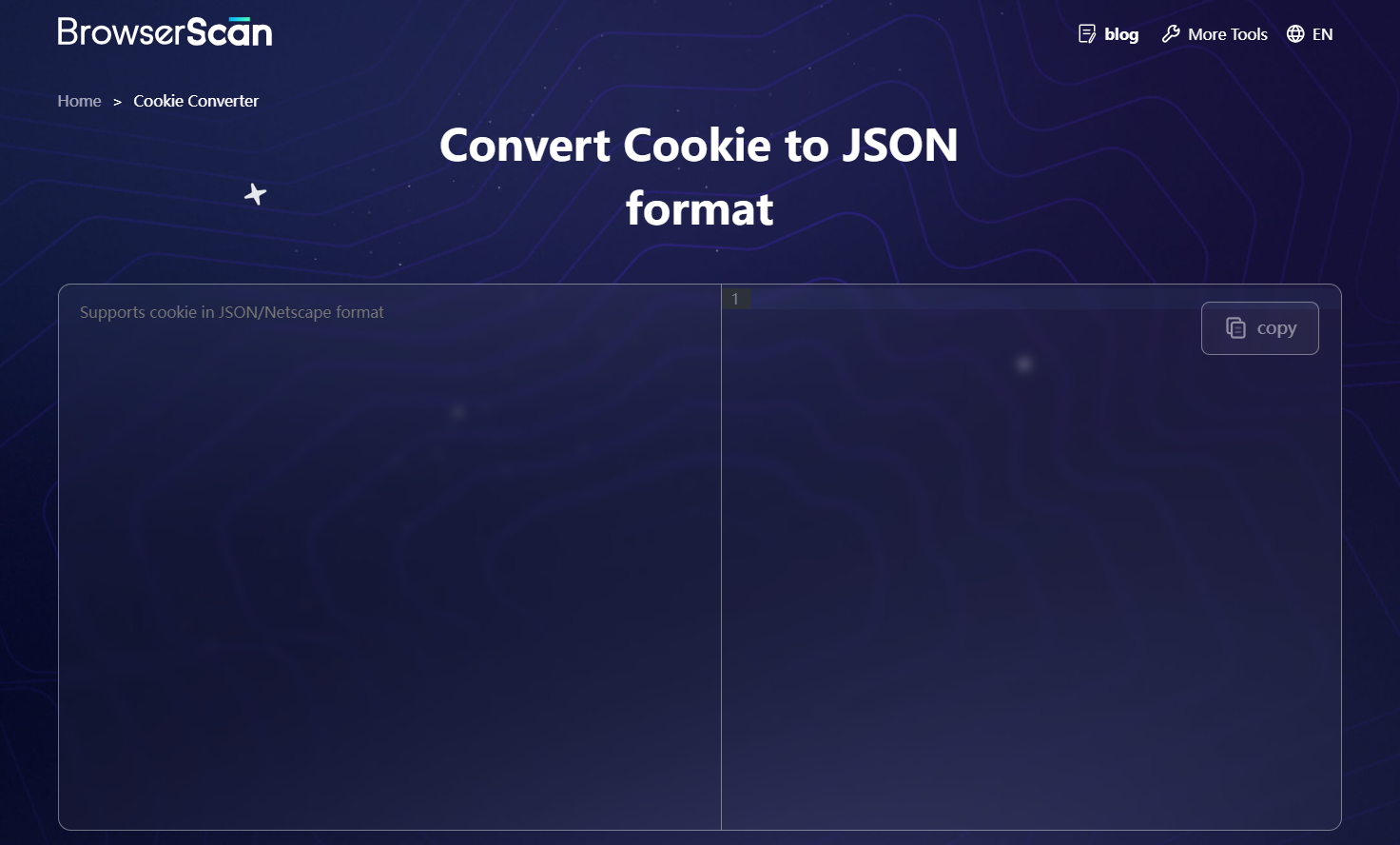User Authentication: Cookies vs Sessions vs Tokens
 BrowserScan
BrowserScanEnsuring secure access to websites and applications is a critical concern, but how you set up access depends on how you store the data to be authenticated. This, in turn, enables user authorization. Cookies, sessions, and tokens are three common ways of setting up authentication.
Understanding the distinctions between cookies, sessions, and tokens is essential for anyone who uses the internet, whether for casual browsing or professional purposes.

What Are Cookies?
Cookies are tiny text files that a web server sends to a browser, which then stores them on the user's device. They store various bits of information like a user's name, their preferences, or whether they're logged in. Each time the browser requests a new page, it sends these cookies to the server, allowing the server to recognize the user and customize the response.
Cookies are easy to implement and widely supported by browsers and frameworks.
Find out the best cookie editors here.
Pros of Cookies
Support seamless experience across subdomains
Cookies can be set to work across your main site and any subdomains. By specifying a domain, like "yoursite.com," you ensure that user sessions are consistent not just on the main site but also on any related subdomains.
Enhanced security against scripting attacks
By using the HttpOnly flag when setting up cookies, you limit how much they can be accessed by client-side JavaScript. This is a crucial step in protecting your site from cross-site scripting (XSS) attacks, which typically involve malicious JavaScript.
Minimal storage requirements
Cookies are lightweight, needing only about 6 KB to store essential information like a user ID. This means that only a small amount of data is sent with each request, keeping things efficient.
Automatically managed by browsers
Cookies are handled automatically by web browsers, which means there's no extra effort required from you to manage them.
Cons of Cookies
Cross-Site Request Forgery (CSRF) attacks
CSRF is a web security vulnerability that allows attackers to perform unauthorized actions on a website while the user is logged in without their knowledge. CSRF attacks happen with sessions that use cookies.
The SameSite setting lets you choose if your cookies work with outside apps in a Strict or Lax way. A strict setting can stop these attacks, but it might also make the site less smooth for the user.
Privacy issues
They can track a user's behavior and preferences across various websites, which poses privacy concerns.
Not good for ApI authentication
APIs provide one-time resources for authenticated end-users and don’t need to keep track of user sessions. Cookies don’t work perfectly in this case, since they track and verify active sessions.
What Are Sessions?
A session is a way to store information about a particular user's interactions with a server. It allows websites to maintain stateful information such as the user's login status, the contents of their shopping cart, or their preferences on the site. Session information can be stored on the server, or it can be stored in the user's browser in some form, such as a session ID.
When a user first visits a site, the server creates a session and generates a unique session ID for that session. This ID is typically stored in a cookie within the user's browser. The user's browser sends this session ID back to the server with each subsequent request, allowing the server to identify the user and retrieve the session information stored on the server, thus maintaining a continuous state across multiple page requests.
Pros of Sessions
Can be in any format and theoretically have unlimited storage. Data is hard to access, alter, or lose.
Using without statement and don't need to worry about freeing up the space later.
Cons of Sessions
Lacks scalability: Without a distributed architecture, sessions can't support horizontal scaling. If you're using a single server, there's no issue. However, in a server cluster or a service-oriented architecture, you would need a unified session database to share session data across servers.
Inconvenient storage forms: The various forms in which session data is stored can be inconvenient.
Can lead to poor code quality: Overusing sessions can make the code hard to read and maintain.
What Are Tokens?
Tokens, in web development, are encrypted strings used for authentication and exchanging information. A common type in modern web apps is the JSON Web Token (JWT).
Tokens are usually created when a user logs in. They contain information that identifies the user and other data.
The user sends the token with their requests to the server. Then the server checks if the token is valid to approve the user's request.
The good thing about tokens is they can be shared across different services. This means you don't need to keep session info for each service, which supports a stateless architecture.
Pros of Tokens
Easy to use
JWTs are user-friendly. They carry all the details needed for checking who you are, so there's no need to ask a database every time. This makes them a great fit for APIs where keeping track of who's logged in isn't necessary.
Cross-platform capabilities
Because of their stateless nature, tokens can be seamlessly implemented on mobile platforms and internet of things (IoT) applications.
Multiple storage options
Tokens can be stored in a number of ways in browsers or front-end applications.
Cons of Tokens
Can't be revoked
A JWT cannot be revoked. Even if a JWT leaks, it remains valid until it expires, resulting in a serious security hole. To handle this, you might need to set up a more complex system that can block certain tokens.
Takes up more space
A JWT might need 300+ bytes to store a simple user ID, because they store other data for authentication.
Cookie vs Token vs Session
Let's summarize the differences between cookies, sessions, and tokens in a chart format:
| Feature | Cookie | Session | Token |
| Storage Location | Client-side (User's browser) | Server | Client-side or server |
| State Management | Stateful (requires server-side storage of session state) | Stateful (requires server-side storage of session state) | Stateless (does not require server-side storage of session state) |
| Performance | Can slow down with too much data | Can be slow if data is large | Generally faster due to stateless design, no need for server-side session lookup |
| Security | Vulnerable to CSRF attacks | Vulnerable to session hijacking; requires secure handling of session identifiers | Often considered more secure as they can be transmitted over HTTPS and are less susceptible to CSRF attacks |
| Scalability | Can be challenging in load-balanced applications due to session state | Can be challenging in load-balanced applications due to session state | More scalable due to stateless nature; easier to handle in distributed systems |
| Cross-Domain Access | Limited to the domain that set the cookie unless subdomains are specified | Typically limited to the domain that set the session | Can be used across different domains and services |
| Storage Capacity | Limited in size (e.g., 4KB per cookie | Not stored on the client, so not subject to the same size limitations | Not subject to cookie size limitations, but larger tokens can affect transmission size |
| Cross-Platform Use | Limited by browser | Limited to web applications | Good for mobile and IoT devices |
Conclusion
While cookie-based authentication has been the traditional method, token-based authentication offers enhanced security and flexibility, making it a preferred option for certain use cases.
BrowserScan‘s Cookie Converter tool can convert Cookie to JSON format, making it easier for developers to transition to token-based authentication methods.

Subscribe to my newsletter
Read articles from BrowserScan directly inside your inbox. Subscribe to the newsletter, and don't miss out.
Written by

BrowserScan
BrowserScan
Am I 100% anonymous? Check your browser fingerprints and IP address to find how your online identity looks👉www.browserscan.net